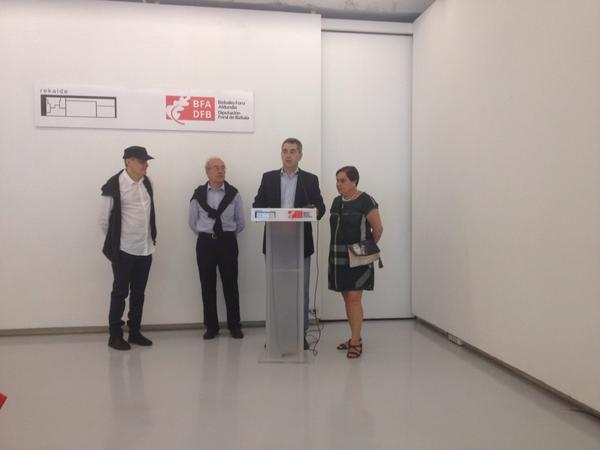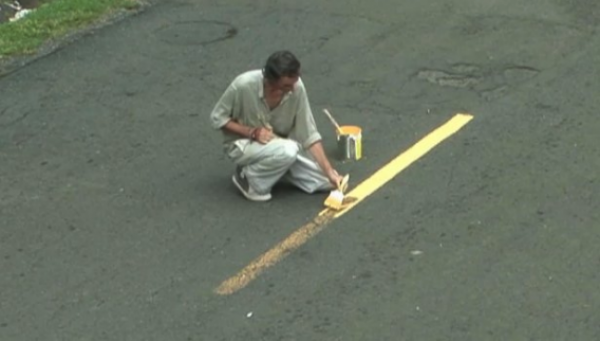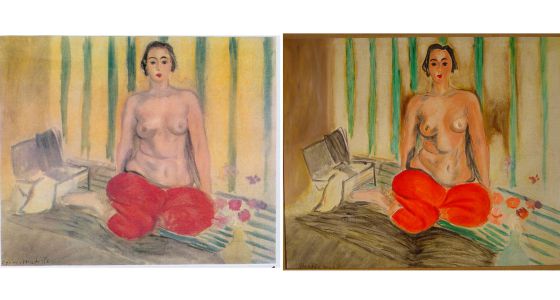En la Gran Manzana hay un lema secreto: dime a qué jardín de infantes van tus hijos y te diré quién eres. Los hay de ideologías muy diversas (religioso no conservador, progresista, Montessori, Reggio Emilia, Waldorf o mezclas ad hoc) y también de riguroso control de ingreso. Algunos de los más famosos aceptan un porcentaje menor de postulantes que Harvard. Dicho esto, resulta inevitable sacar conclusiones acerca del modo como cada cual "cultiva" su propio jardín. Claramente, hay una delgada línea roja que separa la elección de padres médicos, abogados o contadores, por ejemplo, de la decisión tomada por artistas, psicoanalistas o chefs, por citar algunos clichés del mercado.
Jeff Koons es un caso aparte hasta en ese sentido. Es el artista más polémico del momento, que no duda en posar desnudo haciendo fierros paraVanity Fair, aunque viva en el superburgués Upper East Side (67 E y Quinta Avenida), donde jamás pondrían un pie las celebridades de la industria creativa, que son parroquianos del downtown o, a lo sumo, de Brooklyn Hills. El artista vivo más caro del planeta manda a sus cinco hijos menores (sí, cinco) a un jardín de infantes estricto y académico, de riguroso uniforme. El único de formación británica, algunos dirían victoriana.
Quizás esto sea una señal de las enormes dicotomías del estelar Koons. Su presencia se impone al mismo tiempo en la moda masiva, con una línea de carteras para H&M, y con una muestra canónica en el Whitney Museum. Es difícil saber quién es realmente Jeff Koons. Personalmente, el hombre cuya obra explota de brillos y colores parece un ser gris. Un tiempo atrás lo entrevisté para LA NACION (ahora no da entrevistas). Llevaba traje gris oscuro con camisa gris clara, un look que suele repetir; sus ojos eran grises, algo apagados; su pelo, entre rubio ceniza y cano, y su voz era suave, lindando con lo monocorde. De joven fue agente decommodities y hoy, al verlo con su correcto ambo gris oscuro, sería muy fácil imaginarlo como gerente medio en la industria financiera.
***
Pero Jeffrey Lynn Koons (59) no sólo es quien batió todos los récords de precios en remate para un artista vivo cuando en 2013 Christie's subastó por 58,4 millones de dólares Balloon Dog (Orange), duplicando de un zarpazo el precio obtenido cinco años antes por Hanging Heart (Magenta/Gold), uno de los cinco corazones gigantes de distintos colores que salieron de su taller de chapa y pintura. Hay mucho más. Detrás de la fachada monocromática del señor gris está la mente provocadora que inmortalizó su casamiento con la Cicciolina con una serie de obras de técnica mixta, sexualmente explícitas, que instaló en 2008 en las salas del Palacio de Versalles junto con la Pantera Rosa (1988), un capolavoro subastadoen Sotheby's. Para el Museo Guggenheim de Bilbao eligió un cachorro gigante hecho con 60.000 flores; y no le esquivó al mito al crear una escultura de porcelana inspirada en Michael Jackson con su mascota, el chimpancé Bubbles, decorada al oro y vendida en Christie's en 5,6 millones de dólares. Con tantos admiradores como detractores, Koons es un símbolo de nuestro tiempo.
"Para mí es un pionero que tomó la antorcha de Duchamp y decidió poner fin a la eterna cuestión que divide las aguas entre el artista como artesano versus el artista como curador de imágenes. Terminar con la dicotomía arte culto - arte popular", opina Jack Geary, cuya galería homónima es la nueva sensación entre el público joven, aunque forme parte del más ranciogotha neoyorquino. Muchos críticos se desesperan ante el éxito de Koons, que tiene un taller multitudinario pero no hace nada con sus manos . Sólo dirige una orquesta de 130 colaboradores.
"Básicamente, soy la persona con la idea -reconoció Koons en una entrevista-. No estoy físicamente involucrado en la producción. No tengo las habilidades necesarias; entonces, empleo a la gente más capaz y mejor capacitada para eso."
Esta cita sacudió Estados Unidos. No tanto cuando salió originariamente publicada como una declaración del artista sino cuando fue puesta en boca de un ex pasante del taller por la revista dominical de The New York Times en la nota titulada "Yo fui un siervo del taller de Koons".
A pesar de que en la entrevista el joven (que después devino detective privado), se reconocía como un inútil y admitía que, aun así, lo trataron de manera impecable, el hecho de que Koons no metiera directamente la "mano en la masa" para muchos fue un asunto difícil de digerir. Sin importar cuántos asistentes hayan trabajado con Miguel Ángel, como recordaban sus defensores.
En su ensayo del catálogo de la exposición del Whitney, la editora de Art Forum, Michelle Kuo, justifica esto explicando que la fabricación de algunas de las obras de Koons se volvió tecnológicamente tan compleja que los estándares de producción a veces exceden los exigidos en la industria aeroespacial o militar.
Koons, que con Damien Hirst y Takashi Murakami conforma una suerte de sagrada trinidad del mundo del arte actual, tuvo altos y bajos en su carrera, en lo económico y en lo profesional, pero salió adelante porque es un vendedor nato y maneja a la perfección los códigos del marketing. En estos días, y raíz de la muestra del Whitney, The Wall Street Journal destaca el estilo Koons "siempre abierto a nuevos negocios". De hecho, aparece en un video promocional de Oceana Bal Harbour, un desarrollo inmobiliario de Eduardo Costantini, quien compró por 14 millones de dólares dos esculturas del artista récord. Una de ellas, Plutón y Proserpina, integra la seleccíon de obras expuesta en el Museo Whitney en el segmento consagrado a citas de piezas famosas de la historia del arte .
***
Por esta combinación de arte, comercio y publicidad, se suele tratar a Koons como si fuera un Warhol contemporáneo. Sin embargo, Vanity Fair -una biblia para el mundillo del arte y de la moda en Nueva York- le dedicó una larga nota, ilustrada con la foto de Koons de espaldas, levantando pesas como Dios lo trajo al mundo, para decir exactamente lo contrario.
Mundos paralelos y perspectivas diferentes. Warhol era un outsider, hijo de inmigrantes eslovacos, que se mantuvo siempre y deliberadamente en los márgenes. Mientras que Koons creció con un fuerte sentimiento de pertenencia al entorno tradicional dominante. Su familia tenía un campo en Pensilvania, donde hoy pasa los fines de semana con sus hijos menores y disfruta el confort y el estatus de una casa señorial mantenida impecablemente con muebles de época.
Cuando la Frick Collection lo invitó a dar una charla sobre bronces del Renacimiento y el Barroco, Jeff Koons dedicó muchos tramos de su exposición a los genitales de las obras, con intención transgresora, y sin embargo, logró su cometido: que el museo más emblemático delestablishment lo considerara como "alguien de la casa".
Todo el drama, el color, la exuberancia rupturista se concentra pura y exclusivamente en sus esculturas consagradas por el coleccionismo contemporáneo como una meca. En el último año, el señor Koons ha facturado más de 112 millones de dólares y está previsto que la muestra, de carácter itinerante, viaje al Pompidou de París y al Guggenheim de Bilbao. Mientras tanto, acaba de recibir la autorización para unir dos casas de su propiedad en el corazón de Manhattan y levantar una mansión de 2000 metros cuadrados.
A su manera, Koons encarna las dualidades, arte/comercio, pasado/futuro, establishment/avant-garde, convencional/exótico. Quizás, la mejor definición está en la presentación de la muestra del Whitney: "Jeff Koons no sólo es un hijo de nuestro tiempo, es un agente activo de él". C
Ficha: Jeff Koons: una retrospectiva en el Whitney Museum, Nueva York, hasta el 19 de octubre. Es la última exposición en la sede de Madison Avenue antes de la mudanza al edificio proyectado por Renzo Piano en el meatpacking district..


















